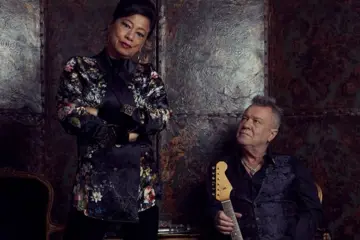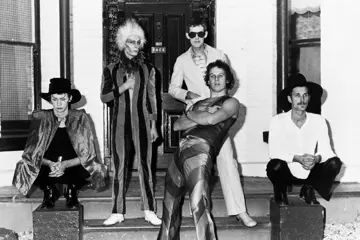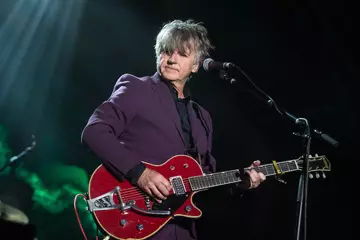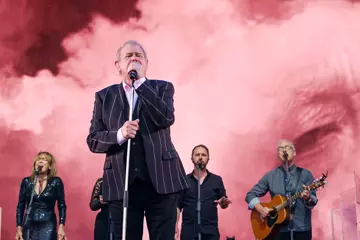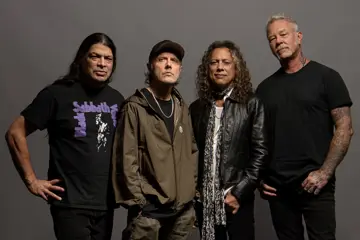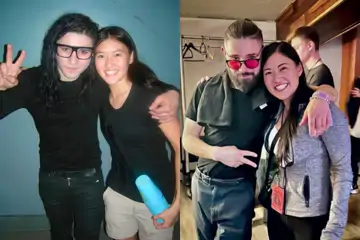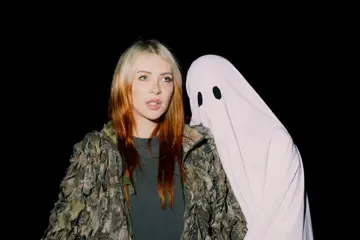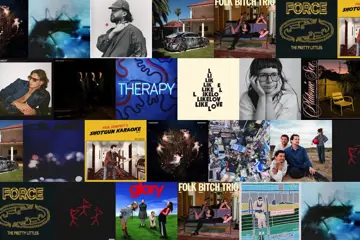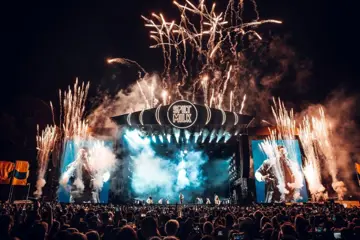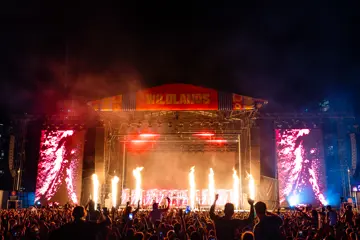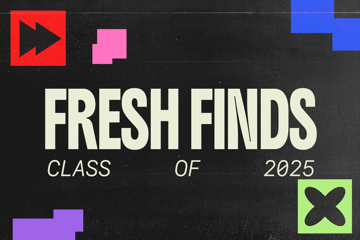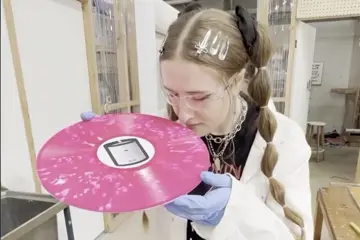The trio of Sydney art institutions that have teamed-up to present the first of three planned instalments of The National are not only showcasing the best existing examples of Aussie art from the past century, they're adding some new masterpieces too. Collaboratively, the three partnered organisations have selected emerging, mid-career and established artists to present newly made work as part of a single curated program at the three cultural fixtures.
For Directors Michael Brand (Art Gallery of NSW), Lisa Havilah (Carriageworks) and Elizabeth Ann Macgregor OBE (Museum of Contemporary Art), the initiative has already provided a rare opportunity to "forge close relationships with artists in the process of commissioning and developing new work," while establishing their shared devoir to the ongoing development of contemporary visual arts in Australia.
Three of the works commissioned for The National by the Art Gallery of NSW come from Australian artists Taloi Havini, Agatha Gothe-Snape and Alex Gawronski.
Like much of the work being presented at the exhibitions, these three new commissions reflect the multiculturalism that has become such a prevalent part of modern Australian culture. Taloi Havini, who is currently on a residency at the Palais de Tokyo in Paris, migrated to Australia from Papua New Guinea in 1990. Her personal experiences of being both of Australia and yet part of a distinct cultural consciousness has heavily informed her work, which draws on a wide variety of media.
Havini's 2017 piece Habitat, which is being shown at AGNSW, was filmed on the island of Bougainville, where the artist was born. Via a series of single and multi-channel video installations that feature a complex counterpoint of geographical surveys, Habitat reflects a modern day, urban apathy for the unfamiliar terrain of the rainforest. It begins in Konawiru and moves through the tangle of waterways that make up Jaba River delta, a region belonging to local Nagovis people, before traversing the Moroni Valley and the Crown Prince Range, areas customarily associated with the local Moroni people. This land was compulsorily acquired in 1969 by the PNG Government, who formed a joint venture with Australian mining company Conzinc Rio Tinto to develop the Panguna copper mine, which was eventually forced to close in 1989 when equipment was sabotaged by a local resistance movement.
Don't miss a beat with our FREE daily newsletter
Havini's work, while geographically remote to Australia, has strong resonances with familiar injustices much closer to home, such as the fundamental incompatibility of indigenous tradition and corporate greed. By refocusing this narrative through a distant cultural lens, her work offers both solidarity and perspective on issues that continue to tarnish the Australian psyche.
Agatha Gothe-Snape's wide-ranging practice deals in the intangible yet emotionally potent world of the ephemeral. Using elements of performance and real-time alterations to a space, her work is built from the ineffable material of memory. She considers physical, emotional and historical responses to making and looking at art so as to investigate relationships between the individual, the social world and various historical contexts. As a series of performance-based events, staged at all three venues for The National, in Gothe-Snape's work will take the form of a large-scale text work based on Robert Hughes' 1980 documentary series The Shock Of The New.
Alex Gawronski's practice is similarly diaphanous in its rich variety of forms, including installation, photography, painting, video and text. Much of the artist, writer, gallery director, and educator's work takes the form of installation works that challenge the viewer's psychological understanding of how art is acknowledged and consumed in both formal and unconventional spaces. A new addition to Gawronski's Ghosts series, which began (on a much smaller scale) in the late 1990s, involves a series of 1:1 scale reconstructions of architectural structures specific to the three Sydney art institutions taking part in The National.
Together, these reconstructions form a type of visual cognitive dissonance, where distinctive features from one location are superimposed on the next, challenging the viewer's sense of place and time. The industrial iron columns of the 19th century tramsheds that now make up Carriageworks will be reconstructed in the neoclassical Vestibule of the Art Gallery of New South Wales (AGNSW), the AGNSW's foyer extension will be rebuilt in the new Museum of Contemporary Art Australia, and the MCA's art deco-styled entrance will be recreated within Bay 21 at Carriageworks.

